Section 2: Taking Perseverance into classroom culture
2.1 Teachers as habit formers
As teachers we are in the habit-forming business. Those habits that we model in front of young people influence the ways in which they perform and behave. Therefore, we need to be sure to foster productive learning habits. If, for example, we offer constructive feedback but fail to require students to act on it, we are not building their inclination to further improve on previous attempts. In such ways do good teachers, albeit inadvertently, stifle the very behaviours they are seeking to promote.
Activity 2: Does my classroom climate encourage Perseverance?
Classroom culture is all-important in building pupils’ learning power. It’s about roles and relationships in the classroom, how learning is organised, the vocabulary of learning, and what gets celebrated. A classroom climate that supports and nourishes the inclination to persevere is characterised by: a culture that prizes effort over attainment; high-challenge low-stress activities; a language of ‘learning’, not ‘work’ and that being stuck is an interesting place to be; the feeling that students can fail ‘in safety’.
Developing a perseverance-friendly culture needs teachers to believe that:
- Real learning comes from making mistakes and overcoming being stuck
- Being stuck is an interesting, not shameful, place to be
- Mistakes are learning opportunities
- Real learning requires effort, and good teaching is about putting the learning in the extended grasp of the learner
And through such a persevering culture students come to believe that:
- Effort is part and parcel of the learning process, and I’m discovering how to do this
- Having to try doesn’t mean I can’t be good at it
- I can learn more from making mistakes
- Giving up should be considered only when other strategies have failed
- Easy work doesn’t help me really learn
Get a feel for your classroom culture and how this may be working for or against positive approaches to students becoming increasingly willing to persevere.
Look through the ideas carefully and consider whether you already use some, and whether any appeal to you to try.
Activity 2 – Classroom Observation-Perserverance
What do you think?
- What do your answers suggest?
- How does your picture of classroom culture contribute to students’ approaches to Perseverance?
- Is this broadly negative or positive?
- What insightful ‘Ah ha’ moments did you have as you read through the list?
- How have these changed your view of Perseverance?
Make a note of…
- An idea on the list you want to start doing.
- Any ideas that look as if they might help students to become better at Perseverance.
Section 3: Teaching for learning; activities and talk.
So far, you have:
- Looked at your students through the lens of the Perseverance learning grid
- Gained a sense of what becoming better at Perseverance looks like
- Considered how you might shift the culture of the classroom to nurture Perseverance
Now we look more closely at things you can actually do in the classroom to provoke, guide and support students to get better at Perseverance; to build the phases of Perseverance mindedness.
Go to the phase that you have already identified as the one that most of your students need to develop next.
In each Tab box below you will find an overview of the teacher’s role followed by a range of suggestions linked to making the classroom culture more Perseverance-friendly. After each suggestion you will see a brief statement in green that reinforces the cultural aspect of the idea. While some suggestions are one-off ideas, many can be used several times during a year or indeed be made into a classroom routine and thereby shift the culture.
Moving from Grey → Purple (Receives)
Receives: Minded to seek to stay in their comfort zone
 In the Receives (purple) phase, students have made a big leap from having a negative mindset to a neutral one. Here they are inclined to play it safe, staying within their own comfort zone to ensure success and avoid perceived failure. They still need adult support to maintain focus and optimism when tackling tasks they perceive as difficult, but beginning to show willing to take more responsibility.
In the Receives (purple) phase, students have made a big leap from having a negative mindset to a neutral one. Here they are inclined to play it safe, staying within their own comfort zone to ensure success and avoid perceived failure. They still need adult support to maintain focus and optimism when tackling tasks they perceive as difficult, but beginning to show willing to take more responsibility.
Behaviours to secure, Moving from Grey to Purple
Perseverance can be promoted both by how you structure the learning environment and how you help pupils to think of themselves as learners.
Your role as a teacher in this phase is to:
- Introduce the concept of Perseverance in order to avoid pupils becoming too dependent on adults and begin to understand that being ‘stuck’ is a good place for a learner to be
- Introduce the concept of Managing Distractions in order to help pupils to focus their efforts on learning
- Introduce the concept of comfort zones in order to help pupils begin to understand what they find challenging and how they might view failure and mistakes more positively.
In other words you are beginning to make learning visible: uncovering and exploring how it feels, what makes it work, and what the pupil’s role in the process is to be.
Introducing the concept of Perseverance.
Adopt a character (ages 4-10)
‘Adopt’ a character – real, imaginary, human or animal – who exhibits the best features of perseverance. Talk about the character until your children become familiar with its attributes. When you have set a group to work on a particular task – numeracy, reading, writing etc., leave this character (actual or picture) on their table as a reminder of ‘what to do when you don’t know what to do’.
Introducing the learning vocabulary
Sing a song (ages 4-10)
Learn to sing ‘Incy Wincy Spider’ and talk about how spiders persevere with their web building and thread climbing.
Introducing the learning vocabulary
Link perseverance to life in general (ages 8-12)
A range of short ideas to help pupils link perseverance to the world in general.
Use as a start-up activity for introducing Perseverance.
Introducing the learning vocabulary
Show an animation (ages 4-10)
1 minute animation to illustrate an aspect of Perseverance.
Use it to talk about trying other ways to achieve what you want to do.
It’s about shifting responsibility for learning to the learner.
Make your own class animations for different aspects of Perseverance.
Introducing the concept of Managing Distractions
Distraction scales
Ages 8-12
Build greater awareness of pupils’ distractibility and extend the vocabulary about distraction.
Introducing the learning vocabulary and learner self talk
Resource contains:
Have a discussion (ages 8-12)
A range of short ideas to help pupils understand Perseverance.
NB. Where we have used the word ‘Resilience’ – please now read ‘Perseverance’
Introducing the learning vocabulary
Lots of ways to deal with distraction (ages 4-8)
Read about another six ways in which you might introduce and extend thinking about distractions.
Encouraging learners to be crew not passengers
Nurture the capacity to manage distractions (ages 4-12)
Look at pages 12-13 in this book to find another five ideas about how you might develop and nurture pupils’ capacity to manage their distractions.
Extract from Building Learning Power in Action, by Sarah Gornall, Maryl Chambers, Guy Claxton
Try a quick activity (ages 8-16)
Two activities to introduce pupils to exploring what distractions are and the things that distract them.
Worth using every so often to gauge improving attitudes
Read a story (ages 4-8)
Contains
- A ready made story – where Soli discovers how things get in the way and stop us from getting on
- Questions to use to explore:
Use the distraction questions to explore this idea in other stories.
Model distractions (ages 4-8)
A quick starter activity to illustrate the meaning of distraction.
Explore the effects of distractions on pupils
Link managing distractions to life in general (ages 8-12)
A range of short ideas to help pupils link managing distractions to the world more widely.
Use as a start-up activity for introducing distractions.
Introducing the concept of getting unstuck
Generating stuck prompts (ages 4- 18)
Every classroom needs them!
See also an extract from Learning to Learn – The Fourth Generation, by Guy Claxton
Stuck Posters.
Work with pupils to find useful questions for them to ask themselves and helpful strategies which they might take when they are stuck. Ensure that there are plenty of options that come higher on the list than “Ask the teacher”. Create displays as reminders.
Extract from Building Learning Power in Action, by Sarah Gornall, Maryl Chambers, Guy Claxton
So called Stuck posters or prompts come in various shapes and sizes, but essentially they are simply home-made lists of what pupils can try when they get stuck with their learning: ‘Read the question again’, ‘Split the question into smaller bits’, ‘Try sounding the word out letter by letter’, ‘Ask your neighbour’ — that kind of thing. If the teacher were simply to photocopy the list from a L2L manual and stick it on the wall it wouldn’t work. But in a BLP classroom, the ideas are generated by the students themselves, and are the subject of continual debate and refinement.
“Instead of simply dishing out more good advice to students-as-consumers, classrooms are becoming places of day-by-day knowledge generation about learning”
Students are challenged to produce a continual stream of ever more sophisticated ideas about how they can boot-strap their own ability to be independent learners, and these are accumulated and displayed as ever-expanding public records of their achievement. To begin with, the teacher trains the students to make use of this information by greeting every request for prompting with; ‘Have you looked at the poster?’ After a while, looking at the poster becomes routine, and eventually, when the habit of self-unsticking becomes second nature, even the poster becomes redundant. It does not take long, in such a Fourth Generation L2L classroom, before ‘Ask the teacher’ becomes a last-ditch strategy, to be engaged only when all else has failed.
By contrast, when effort becomes seen as natural and interesting, the habit of perseverance expands, and a subtle but powerful shift in the classroom atmosphere begins to occur. It is in this kind of way that BLP moves up a gear, from the technical to the cultural. In a sense the STUCK poster is a stand-alone technique, but it can be much more than that if the teacher wants it to be. It can be used as an effective, low-risk, low-investment lever for creating a shift in students’ sense of what is valued, what is normal, and what is the point of their learning — and thus in the quality of their engagement.
A must do part of any BLP classroom
Read a story (ages 4-10)
A ready made story – where Jay learns that everyone can find learning difficult. Provides an opportunity to think about the feelings that often go with learning or doing something new.
- Questions to explore
- the story itself
- the ideas of stickability
Use the stickability questions to explore this idea in other stories.
Try a quick activity (ages 8-12)
NB. Please read Perseverance for Resilience.
A 5 minute activity to introduce pupils to broad ideas of stuck and perseverance
This resource consists of
Explore challenge and stuck (ages 4- 11)
A whole class activity set up to ‘explore the nature of challenge, the difficulties encountered and how they work to overcome them
Contains
[/two_third_last]
Introducing the concept of Comfort Zones
Explore comfort zones (ages 4-11)
Loosely based on Vigotsky’s work on Zone of Proximal Development, this activity uncovers how we feel about things we do, or don’t do.
Use it to explore how different tasks present different challenges to individuals
- what would panic some would be comfortable for others
- the negative feelings of learning and overcoming them
Helps to prepare for stretch and challenge as a natural part of learning
Design a ‘Riskometer’ (ages 4-11)
Draw a thermometer on the wall, with a scale from overstretched to low or coasting. Work with the class to describe the various levels. High might read “I took the step to try something just a bit harder than before. I worked on it until I could do it and understood it clearly” and Overstretched might be “This was a few steps too far … next time I will chose a more manageable task.” Talk to children about the degree to which they have felt stretched and ask them to move photos of themselves up and down the scale. Use it to stimulate discussion about sticking with tasks and understanding when it is not wise to do so.
Extract from Building Learning Power in Action, by Sarah Gornall, Maryl Chambers, Guy Claxton
Helping pupils understand risk and challenge. Worth routinising this until pupils get the measure of it
Capture perseverant behaviour (ages 4-10)
Building a learning culture.
A short explanation of a teacher enquiry into low levels of perseverance and concentration.
Annamaria Scaccia’s class at Tremorfa Nursery School in Cardiff
She carried out a teacher enquiry on a group of four-year-old boys who showed low levels of perseverance and concentration. She simply took digital photos of them, and the rest of the group, on the occasions when they were visibly persisting and focusing on what they were doing, and displayed them on the Learning Wall. This simple manoeuvre turned out to have the desired effect: the boys wanted to have their photos on the board, so they tried harder to stay on task. Sometimes when they consider themselves to be working really hard at something they will ask to have their photo taken.
They look at the wall to remind them of the times when they were working hard… The photographs displayed give them ideas of things to do when they don’t know what to do, which consequently is expanding their learning capacity.’
Worth making this sort of activity part of your classroom routine to encourage pupils to recognise their role in learning
Extract from The Learning Powered School. Guy Claxton, Maryl Chambers, Graham Powell and Bill Lucas
Learn-o-meter/Distract-o-meter (ages 4-11)
Little strips of laminated card and a peg can put children in charge of their learning a little more. Labelled ‘Easy learning’, ‘Challenging learning’ and ‘Too hard’ on one side, pupils use them to let you know whether you are meeting their learning needs or if they could do with more extension or support. It is powerful when learners realise that challenge is an essential element of their learning; that finishing easy tasks quickly does not signal cleverness but indicates time-filling rather than real learning.
The other side of this little strip is labelled ‘Absorbed’ at one end and ‘Distracted’ at the other. Teachers use this initially to help pupils monitor their absorption in learning but children will quickly begin to use it as a visual prompt to monitor themselves.
Make use of this type of resource routine in your classroom. It helps shift the responsibility for learning to the learner
Idea taken from Learning Power Heroes, by Raegan Delaney, Leanne Day and Maryl Chambers
Build a distraction scale (ages 4-12)
Building a distraction scale with pupils.
Distraction Scale
Work with pupils to describe different degrees of the ability to manage distractions. A 3-star manager might “always keep focused on what s/he is learning” and “Support other learners by helping them to manage their distractions”. Use language appropriate for the age of the pupils. Comment on behaviour to recognise and value the management of distractions. Ask pupils to help each other with ideas about how to earn more stars as distraction managers.
From Building Learning Power in Action, by Sarah Gornall, Maryl Chambers, Guy Claxton
- This Milton Keynes school captures children’s own assessment of managing distractions weekly
- They have developed a 5 point scale for managing distractions
- Each child sticks a personal logo, known only to them and the teacher, on the level of distraction they feel they have achieved across the week.
- These assessments are recorded by school and
- Set against progress data
- Perhaps not surprisingly strong positive correlations being found…being able to manage distractions better positively correlate with increases in progress.
Worth making this a weekly classroom routine to enhance learners’ understanding of their responsibilities as a learner.
Perseverance Thermometer (ages 9-13)
Develop a greater awareness of pupils’ tendency to persevere and extend the language of perseverance.
Worth using this a couple of times a term to gauge changes in attitude/improvement in persevering.
Contains
Moving from Purple → Blue (Responds)
Responds: Minded to be willing to believe that effort will pay off
In the Responds (blue) phase students develop greater independence and are motivated by trying to reach achievable goals. They are realising that fear, the need for adult support, and distraction can be overcome by having/using more coping strategies and practical ideas to get them unstuck.
Behaviours to secure, moving from Purple to Blue
Perseverance can be promoted both by how you structure the learning environment and how you help pupils to think of themselves as learners.
Your role as a teacher in this phase is to:
- Broaden pupils’ understanding of what ‘being a learner’ means
- Assist pupils to handle uncertainty and take on more challenge
- Motivate pupils to persevere and have high expectations of themselves
Broaden pupils’ understanding what ‘being a learner’ means
Model being a learner (ages 4-11)
The attitudes, values and interests that a teacher displays in the classroom, knowingly or not, constitute arguably the most powerful medium through which the messages of learning rub off on students.
- demonstrate the habit and inclinations of a good learner
- be a confident finder-outer
- say ‘I don’t know’ without being defensive
Read an extract from Building Learning Power, by Guy Claxton
An aspect of their teaching on which BLP teachers will want to focus is what they themselves are modelling to their students about being a good learner. Modelling refers to all the ways in which teachers demonstrate to their students the presence or absence of learning power in their lives, as well as its nature. They can ask themselves:
- ‘How much do I “learn aloud”—externalise my own exploratory thinking—in front of the students?’
- ‘How do I react when things do not go according to plan?’
- ‘To what extent do I reveal to the students the thinking that went into organising a lesson one way rather than another?’
- ‘How do I respond to questions I can’t answer—am I thrown by them?’
- ‘How much could I reveal about my own learning projects—with all their ups and downs?’
A BLP teacher’s job is as much to demonstrate the habits and inclinations of the good learner as it is to be knowledgeable and in control. Traditionally it has been the teacher’s role to demonstrate mastery of the subject, and to be able to answer any questions which the students may throw out. Teachers still tend to worry that they will lose respect from the students (and maybe from senior teachers and parents too) if they do not ‘know their stuff’ through and through.
But the professionalism of the BLP teacher must allow them to show students what it is to be a confident ‘finder-outer’ as well as a ‘knower’.
And if students or their parents need to have their attitudes and expectations changed somewhat, then that becomes part of the teacher’s and the school’s responsibility.
Logging distractions (ages 8-12)
Build awareness of students’ distractibility across life more generally by using a learning log for recording everyday distractions and their reactions to them.
Discuss ideas about how to reduce distractions.
Extends the language of learning
Learning scrapbooks (ages 6-11)
Read about how pupils keep scrapbooks, where they reflect on their learning skills and those of others. Here pupils record their thoughts and strategies for learning which they can refer back to anytime.
Make this a weekly routine to help understanding of what learners do.
Assist pupils to handle uncertainty and take on more challenge
From stuck to struggle (ages 4 – 11)
Stuck prompts and learning walls provide quick ways of overcoming a tricky bit. The ability to cope with and overcome difficulty and challenge is a key aspect becoming a successful learner.
James Nottingham has introduced the idea of the Learning Pit as a way to explain that struggling is part of learning and that if we are to understand something we need to struggle with it first.
Worth making this part of your approach to learning to strengthen handling uncertainty
Find out more by visiting:
Celebrating mistakes (ages 4-11)
Making mistakes is a critical part of the learning process. They tell us what worked and what didn’t. But pupils often see mistakes as a sign of personal failure. These pupils use defensive strategies and become unwilling to share ideas in case they are wrong. They need to be able to view mistakes as a learning opportunity, Some teachers now celebrate mistakes – ‘Mistake of the week’ award – i.e. the one that had helped all the class move forward.
Make this an everyday celebration
Sharing mistakes (ages 4-11)
Make mistakes useful. Create a ‘Beware board’ in the classroom and invite pupils to share their mistakes on Post-its. Talk about why the mistake was made, what thinking led to the confusion and how it could be avoided in the future. Bringing mistakes into the open and discussing them helps other pupils to avoid them while recognising their value.
Make this a daily routine
[/two_third_last]
Arranging the classroom (ages 4-11)

- Do the images and messages of the classroom environment reinforce taking on more challenge?
- Does the arrangement of furniture invite and encourage the right make a choice in learning activities?
- Are the resources available to help students become more independent?
- Do the walls provide a cumulative record of the class’s learning achievement?
- Do the walls display public prompts that students can use to extend their learning, or to kick-start it when they have got temporarily stuck?
Check your classroom twice a term to ensure the above are fresh and useful
Who wants to be a Millionaire?
During the popularity of the television quiz show Who Wants to Be a Millionaire?, some teachers called these sorts of prompts the students’ ‘lifelines’ which, just like ‘Phone a friend’ or ‘Ask the audience’, they can use when they are stuck or unsure. At the end of lessons, the class can review who used which lifelines, how many times, and which were the most popular or successful. The class can make up its own rules, like ‘You have to have used “Read the poster” and “Ask a friend” before you can use “Ask the teacher”.’ ‘You can have three designated friends (or learning buddies), but you can’t use any one of them more than twice in any lesson.’ Whatever goes up on the walls, it is important to make use of it in the daily life of the classroom, otherwise it rapidly becomes invisible.
An idea to use once in a while to extend ideas for getting unstuck.
Motivate pupils to persevere and have high expectations of themselves
Displaying work in progress (ages 4-11)
Make this a constant feature of your classroom
Exploring consequences of giving up (ages 6-11)
Read about how pupils at Nayland primary school in Suffolk explored the consequences of giving up and their own choices in making such decisions.
A once-a-year suggestion to explore the notion of ‘giving up’
Celebrating learning (ages 4-11)
Learning stickers and Learning Hero of the week. Read about how Nayland Primary School in Suffolk celebrate learners through stickers, in circle time and in whole school assemblies.
They now have a school full of ‘how to learn’ heroes.
Celebrating ‘how to learn’ should be a feature of every learning powered classroom
A learned list (ages 4-11)
We invited the children to make themselves a ‘Things I have Learned in my Life’ scroll or book. They were to get as much help as they could from friends and family in order to make the most comprehensive list they could. We gave them time to share their lists with one another so that one idea inspired another until they felt their list was as complete as it could be. Each time they learn something new, in or out of school, they add it to their list. It has proved be a super weekly celebration to hear about and congratulate additions. ‘My son would this week add “How to yoyo”. It took a great deal of perseverance and imitation of his uncle Graeme, and deserves praise as much as any NC learning intention.’
An activity to do every so often to remind pupils about learning as a constant activity
Introduce the idea of being absorbed (ages 8-12)
Try this starter activity to introduce pupils to being absorbed. Useful at the start of any lesson.
Contains
To extend the language of focusing on learning.

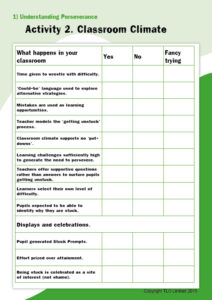

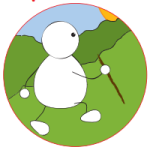
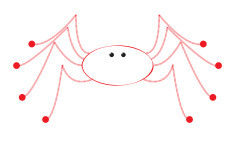
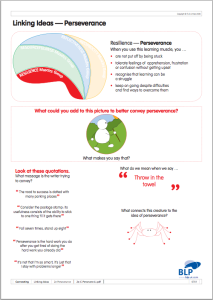
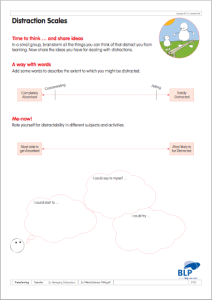
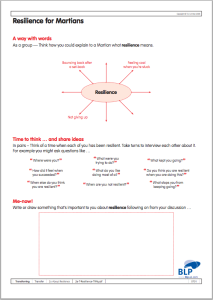
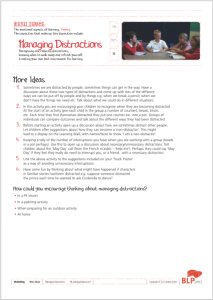
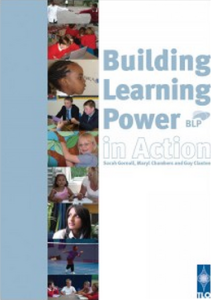
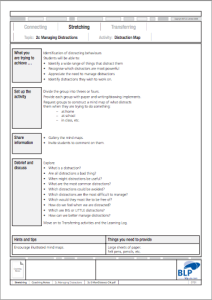
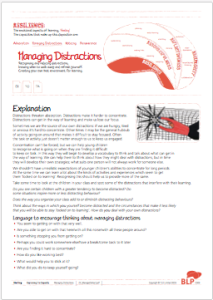
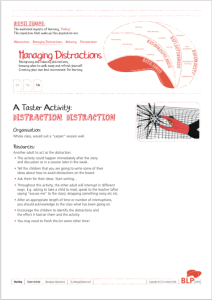
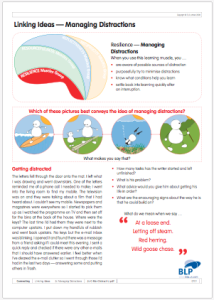
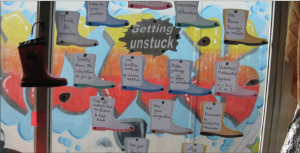

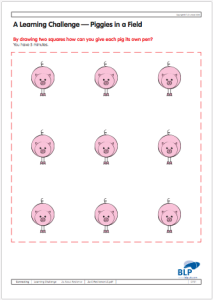
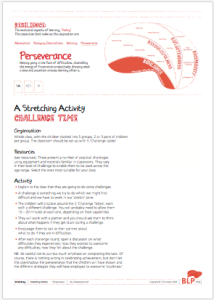
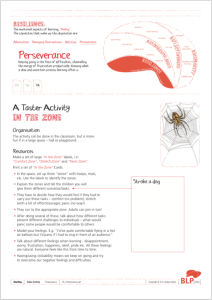
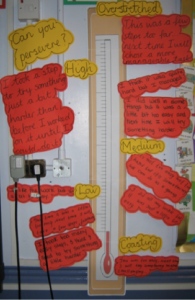

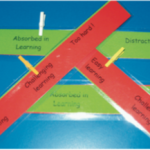
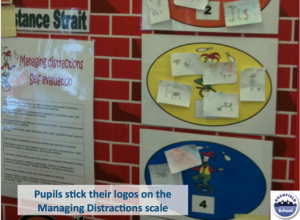
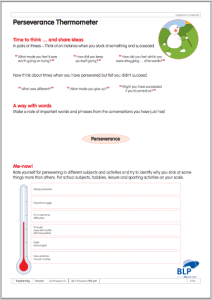

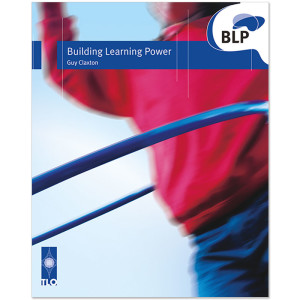
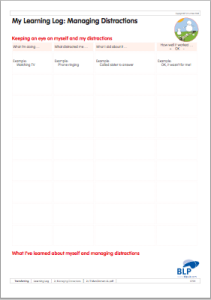
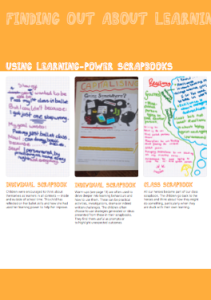
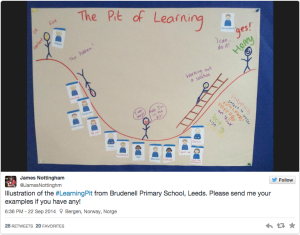
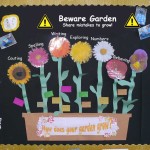
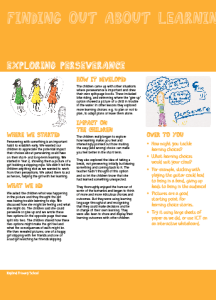
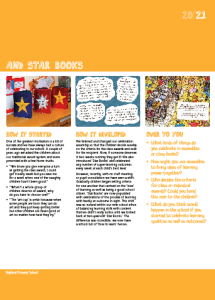
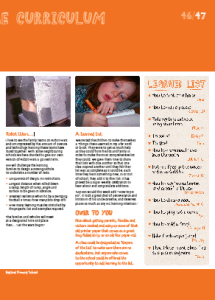
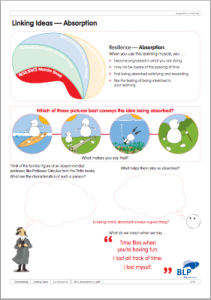
Comments are closed.